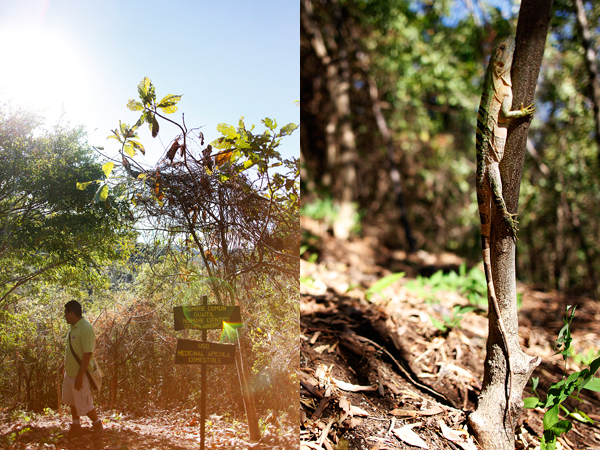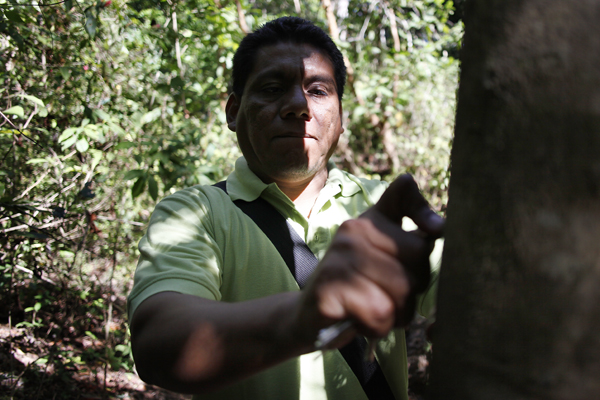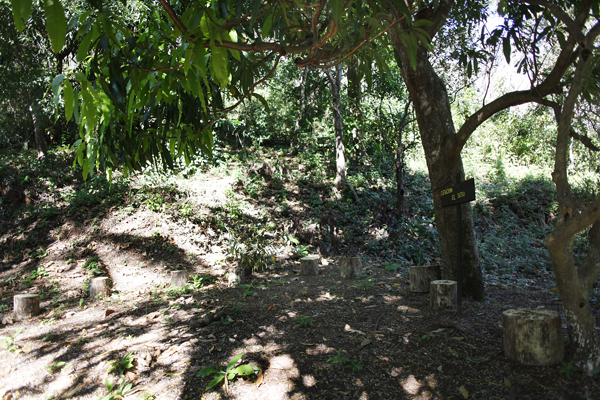
Photos by Pinar Istek
As you carefully make your way down the initial steep incline at the beginning of Sendero La Joya (The Jewel Trail), you are descending into a forested wonderland where cicadas hum to you and butterflies flutter past.
The trail recently opened for guided tours in Estrada, just past Playa Carrillo, is a result of collaboration between the National University’s sustainable tourism program and Carrillo Tours. The tour promises to give tourists a deeper glimpse into local culture and history as 78-year-old Honoria Mendoza Castrillo, owner of the finca, provides a typical homemade lunch cooked on a wood-burning stove and the family shares some of their history.
Beginning in July of 2012, using nothing but machetes, shovels and natural materials, UNA students from Carrillo and Santa Cruz collaborated with designing and preparing a 1.8 kilometer trail through a forested area of the 20-hectare property. The trail provides a good workout with some steep portions, but stairs were dug out in some parts. Fruit trees were planted at the entrance to the trail to attract birds and butterflies. In addition, signs are posted along the trail to identify various tree species and their uses, and four sites were created where visitors can pause for a rest while also learning something about the history of the area. There are also views of the ocean at a couple points along the trail.

William Juárez, tour operator from Carrillo Tours, is one of Honoria’s nine children. Juarez explained that they call the original property La Joya (the jewel) because of its value to the family, since it was on this property that all of the children were born and raised in a small home made from palm leaves. His parents bought the first portion of the property 60 years ago for 200 colones (about 40 cents) and little by little bought other parcels of land to extend the finca. Now Juarez estimates it could be worth as much as $800,000.
Another special aspect of this tour is learning about the uses of the plants and trees along the trail. Juarez explained that since there were no hospitals when he was a child, they had to learn how to find natural cures among the plants. During the tour we took, Juarez pointed out one of his favorite trees, known as the sangrillo (meaning a little blood). He cut into the bark and a red bloodlike substance appeared, which he said can be used to make a cream for skin problems like warts.
The tour lasts about 2 hours and costs $35 per person. For more information, call 2656-0543 or 8340-7558.




| 
